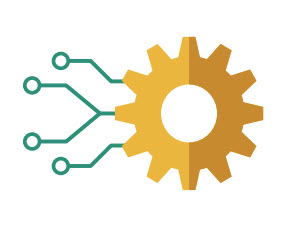AIaaS Opens Up A More Accessible Future Of Law
There’s no version of the future that doesn’t include AI in business and law.
 AI-as-a-Service (AIaaS) is revolutionizing the way we use Artificial Intelligence. AIaaS allows businesses of all sizes to access AI capabilities while avoiding costly in-house hardware infrastructure, staffing, and expertise investments. Organizations can save time and money while taking advantage of the latest AI technologies.
AI-as-a-Service (AIaaS) is revolutionizing the way we use Artificial Intelligence. AIaaS allows businesses of all sizes to access AI capabilities while avoiding costly in-house hardware infrastructure, staffing, and expertise investments. Organizations can save time and money while taking advantage of the latest AI technologies.
AIaaS is a highly versatile tool with potential uses limited only by our imaginations. Of course, left to a trained lawyer’s imagination, the challenges and risks associated with using AI can become just as endless as the possibilities.
But there’s no version of the future that doesn’t include AI in business and law. As lawyers, we must set up guardrails as we move forward alongside our clients using the technologies that help make law more accessible and useful to all.

New Report - Are Small Firms Achieving Their Legal Tech Goals?
How Will Law Firms And Clients Use AIaaS?
The nature of AIaaS puts AI capabilities in the hands of more lawyers and businesses. Vendors offer AIaaS through cloud-based platforms, typically through a subscription. You can purchase access to various tools and services, such as image recognition, speech recognition, and natural language processing, as needed. Use the tools as out-of-the-box solutions or tailor them to your needs.
Clients use AIaaS tools for innumerable benefits, including speeding up products to market, improving customer service, and analyzing large amounts of data. Automated chatbots answer customer questions and provide personalized product recommendations. AI tools automate tedious tasks in accounting, data analysis, market research, and many other areas. Predictive analytics help organizations anticipate business needs and make more informed operational decisions.
What Will Clients Need Lawyers To Do?
Sponsored

Attention Buyer: Not All Legal AI Models Are Created Equal

The Ethical use of Generative AI


Mitigating M&A Cyber Risk: Pre- & Post-Acquisition Due Diligence

Attention Buyer: Not All Legal AI Models Are Created Equal
Protecting client interests will require analyzing existing laws, regulations, and industry standards related to AI to identify potential legal risks and liabilities. For a start, lawyers may need to:
- Assess new and evolving data security and privacy risks related to data storage, access, and retention procedures and issues such as data breaches, unauthorized access, and data misuse.
- Develop legal frameworks and guidelines such as contracts, policies, and best practices to manage legal risks.
- Update existing contracts with new requirements.
- Establish clear roles and responsibilities to ensure all parties are accountable for their actions.
- Educate and train clients on legal risks to make them aware of ways to prevent potential liabilities.
Managing Change
Now more than ever, managing change is part of practicing law successfully. Here again, an AIaaS monitoring system that includes a communication plan with regular updates will help keep you and others up-to-date as changes occur.
Do you and your clients already use AIaaS? How are you preparing for this technology?
Sponsored

How To Maximize Productivity With Westlaw Precision With CoCounsel


New Report - Are Small Firms Achieving Their Legal Tech Goals?
 Olga V. Mack is the VP at LexisNexis and CEO of Parley Pro, a next-generation contract management company that has pioneered online negotiation technology. Olga embraces legal innovation and had dedicated her career to improving and shaping the future of law. She is convinced that the legal profession will emerge even stronger, more resilient, and more inclusive than before by embracing technology. Olga is also an award-winning general counsel, operations professional, startup advisor, public speaker, adjunct professor, and entrepreneur. She founded the Women Serve on Boards movement that advocates for women to participate on corporate boards of Fortune 500 companies. She authored Get on Board: Earning Your Ticket to a Corporate Board Seat, Fundamentals of Smart Contract Security, and Blockchain Value: Transforming Business Models, Society, and Communities. She is working on Visual IQ for Lawyers, her next book (ABA 2023). You can follow Olga on Twitter @olgavmack.
Olga V. Mack is the VP at LexisNexis and CEO of Parley Pro, a next-generation contract management company that has pioneered online negotiation technology. Olga embraces legal innovation and had dedicated her career to improving and shaping the future of law. She is convinced that the legal profession will emerge even stronger, more resilient, and more inclusive than before by embracing technology. Olga is also an award-winning general counsel, operations professional, startup advisor, public speaker, adjunct professor, and entrepreneur. She founded the Women Serve on Boards movement that advocates for women to participate on corporate boards of Fortune 500 companies. She authored Get on Board: Earning Your Ticket to a Corporate Board Seat, Fundamentals of Smart Contract Security, and Blockchain Value: Transforming Business Models, Society, and Communities. She is working on Visual IQ for Lawyers, her next book (ABA 2023). You can follow Olga on Twitter @olgavmack.







